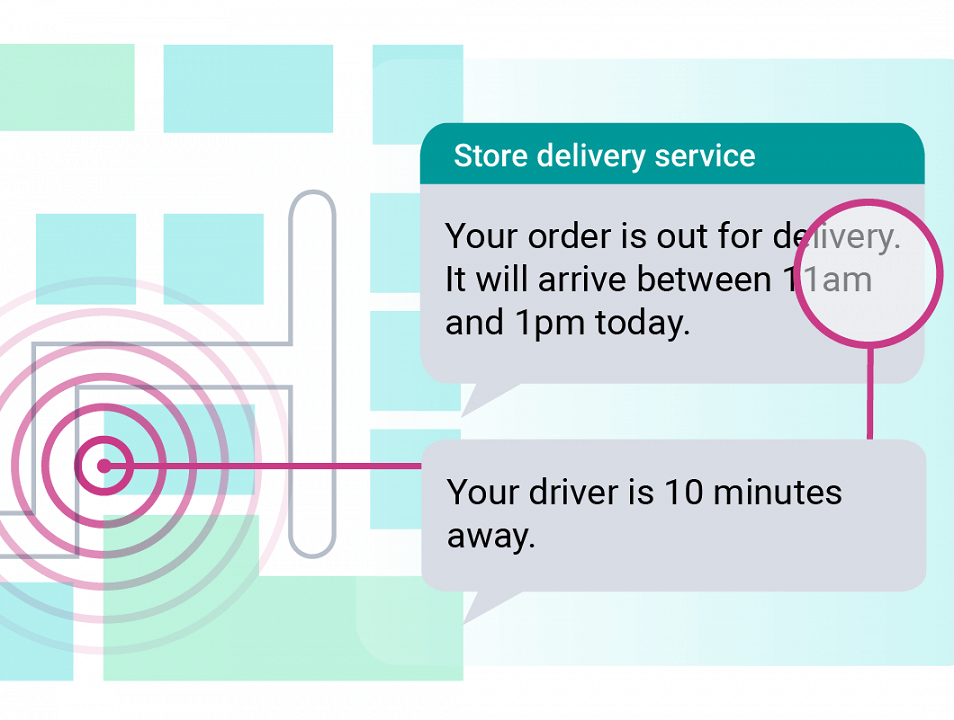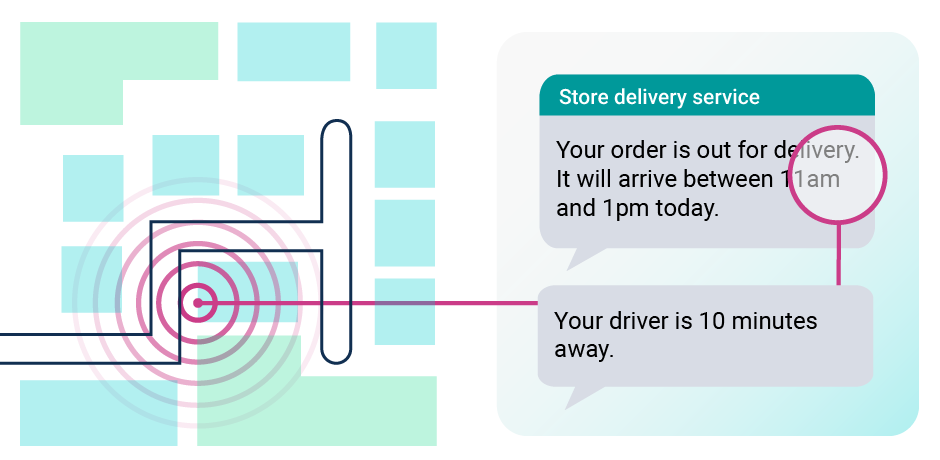
Knowledge Base SMS delivery updates - the rising star
Improve the user experience of waiting for deliveries
You’re an established ecommerce business. You’ve got the basics down - orders come in, products go out, your customers are happy with their new purchases.
You probably do most of your communication with your customers via email at the moment. That’s fine - it’s what ecommerce customers have come to expect, and what many prefer. But are you putting all of your eggs in one basket by only communicating via email?
Curious about the role of SMS in today’s ecommerce experience, we conducted a survey1 of UK ecommerce customers to gather opinions on this stage of the purchase process.

We found that 28% now prefer to receive SMS notifications about their deliveries, compared to 69% who prefer notifications by email.
Amongst 25-34 year olds, email and SMS is tied in popularity for receiving updates.
Like our respondents, we’re all familiar with the excitement of waiting for a new purchase to arrive. Whether it’s coming to you at home, or if you’re one of 8% of shoppers waiting for a package to arrive at the office, it always feels a bit like Christmas.
As an ecommerce business, you should be doing all you can not to spoil this excitement for your customers. No one enjoys being let down when they find the dreaded “sorry you were out” card on their doormat.
Putting some thought into your customer’s preferences for receiving updates about their delivery is one way you can improve this experience.
People who like SMS, love SMS
Although less popular overall, SMS notifications receives glowing praise from those who prefer it.
SMS lovers were eager to explain their preference to our researchers – they enjoy the convenience and speed of receiving a short and informative text message directly to their phones.
It’s an easy quick glance on my phone
An update channel such as SMS is great to capitalise on, as it feels easy and straight forward, as well as carrying an edge of priority and simplicity over emails.
One user made the point that updates via SMS are easy to view; “It’s an easy quick glance on my phone, so a convenient way of knowing what stage my order is at without making too many clicks”. This kind of user prefers not to have to open and load a potentially style-heavy email simply to read a line that says “your delivery is on its way”.
As our article on email validation points out, if a user receives a lot of email spam, then they might not be inclined to sift through all those emails to find the important stuff.
A quick SMS message about an important delivery skips the queue of other less important things vying for the user’s attention. Another user who prefers SMS notifications followed up with “such messages are more likely to be given immediate attention, and unlikely to be swamped … as may be the case with a flood of e-mail, etc.”
So, if you are now considering offering SMS updates as part of your customer’s ecommerce experience, make sure you plan carefully. Offer them as an option to those who want to opt-in, taking care when collecting your user’s mobile phone numbers.
- Be clear why you are asking for a phone number
- Make it clear that you won’t use their data for marketing purposes unless they opt in
- Validate data at the point of collection, flagging to the user that they may have made a mistake if it doesn’t validate
Order confirmation emails
When notifying your user that your team has received their order, email still reigns supreme.
82% prefer to receive their order confirmation in the form of an email, with only 11% opting for SMS rather than an email, an in-app notification, or simply trusting that completing the order on the website was sufficient.
These numbers encourage caution with sending your customers SMS updates. Don’t waste money and risk annoying people by sending too many SMS messages when an email will do.
What information should I provide in order updates?
When asked what information our respondents expect to receive while waiting for a delivery, we found that an expected delivery time slot, a message to say that their package is out for delivery, and notification of any changes were most popular in the rankings.
Expected delivery time slot was mentioned most frequently by a clear margin, with 84% of respondents expecting this.
This desire comes from a practical standpoint. One user who generally gets things delivered to their home and waits in for their package, explains: “It’s easier to receive [an] SMS when out and about, for example I know that the parcel is about to be delivered and if I’m out walking the dog I head straight home. It gives you more flexibility to get on with everyday tasks instead of waiting in all the time.”
84% of people want to see their expected delivery slot
Your delivery carrier is more likely to take charge of this part, so make sure you keep this in mind while you are shopping around for a delivery company to trust your customer’s parcels to.
Users will appreciate being kept up to date, particularly when receiving updates through a quick and dynamic channel like SMS.
Handling failed deliveries
56% of respondents expect to be informed via their chosen channel when a delivery fails. These users prefer to be able to act on the information as soon as possible, rather than being passive agents in the delivery process.
This means that if something goes wrong, you need to be prepared for them to give your team a call about their package.
Your first thought when receiving a complaint from a customer about a failed delivery might be that this isn’t your problem – the delivery courier needs to resolve this, so the customer should speak to them.
Think for a moment before turning your frustrated customer away. You chose that courier to be your representative in the delivery phase of your customer’s journey. If they make a mistake or something goes wrong, you should do your best to make things right.
This is best achieved by making sure that your customer team can reach out to your delivery provider on the behalf of your customer. This avoids the additional frustration for the customer of being bounced from one customer service team to another in order to resolve their issue.
Collecting numbers
Now that you’re convinced of the growing number of users wanting to opt for updates from your company via their phone, you may be warming to the idea of collecting those mobile numbers from them.
As you do this, only ask for the details of users who want you to text them. No one is comfortable giving their phone number to a company for no reason – so don’t ask for it if you don’t need it.
80% of our respondents said that they would provide a mobile number rather than a work or home number if asked to provide a contact number for delivery. That makes it easy to confirm they’ve provided a valid number using Postcoder.
When you’re sure you have your customer’s correct contact details on file, you can be confident that you have all the tools you need to make their journey – right up to when they receive their purchase from you – as frictionless as possible.
Postcoder mobile number validation
Confirm mobile numbers are valid and connected to a network with Postcoder mobile validation. No ghost calls and no confirmation codes required.
Find our more about Postcoder mobile validation >
-
Research details: 200 online shoppers, January 2018. 44% Male, 56% Female, all residents of the UK. ↩



